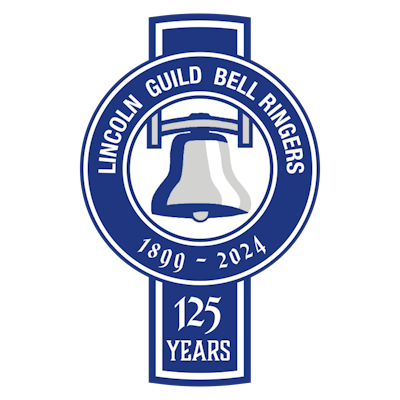Belfry News August 2019
The Impossible Dream
This is the story of one man's dream, all 479 pages describing the Charitable Foundations at Church Langton Leics., worked out in the minutest detail, the aims, the costings, the staff requirements. This man was the Reverend William Hanbury, Rector of Church Langton from 1750 to 1777. Rev. Hanbury was a keen and knowledgeable horticulturist and established large tree and shrub plantations at nearby Gumley and Tur Langton. His intention was to use the income from this enterprise to fund the Charity which in his First Proposals specified church improvements, for example, a new two manual organ, " as good and large as the room will admit of". and "three new bells to be added to the five to make a peal of eight." However this relatively modest scheme quickly morphed via successive deeds into an enormous project, including, when the income amounted to £10,000, a gigantic cathedral complex, square with sides each 600 feet long plus three towers, "the tallest shall not be less than an hundred yards high" and to contain at least twelve bells.
As an additional fund raiser, Rev. Hanbury proposed to stage the Messiah in St Peters church, all properly done with top class performers directed by Dr Hayes, Professor of Music at Oxford University.There was enormous opposition to this, some from his trustees who "got cold feet" in contemplating that they might be liable for any losses. What about the horses and where would the patrons "park" their carriages, bearing in mind Church Langton is a rural village? Rev. Hanbury overcame all objections, even local inflation-he tells us "prices of fowls, butter etc nearly tripled". With his gardeners dolled up as flunkies ( with white breeches, stockings and blue garters) and forming a guard of honour at the church door, the Messiah went ahead. The date was September 27th 1759 the first time this had been performed in a church. Afterwards the patron gentry repaired to "a booth" to enjoy a "cold collation" with ham pies "more than a yard in diameter" The distinguished guests remained until evening when most, excepting the hard core departed for their homes. The latter moved to the rectory greenhouse for a ball where he tells us "Sir Francis Skipwith entertained us with the Cushion Dance." Just what this was, readers, I will leave to your wildest imaginations. Meanwhile the "common people" were allowed into the booth "where they drank wine and punch in plenty". After all of this he unfortunately had his sums wrong as they just about broke even. Many of his tickets-some 2000 of them issued at 5 shillings each were not sold.
As I mentioned, the opposition to all of this was colossal, in particular from two ladies, Mrs Byrd and Mrs Pickering. The three additional bells and the organ (the latter purchased on credit), the former added in 1762 were controversial. These ladies wanted to "take them down" but he prevailed again. With his persistence and tenacity I cannot help being reminded of a film I saw years ago, "The Man of La Mancha" its theme tune and two of its verses;
This is my quest
To follow that star
No matter how hopeless
No matter how far
And I know I'll only be true
To this glorious quest
That my heart will be peaceful and calm
When I'm laid to my rest
Reverend Hanbury followed his quest despite all but was unfortunately laid to his rest in 1777 at the age of 52 years and with his passing the fire went out of the Foundations. He had made an enormous effort, but the income never reached anywhere near £10,000. I'm told he paced the proposed outer walls of the cathedral complex, placing corner stones at its extremities. I like to think they are perhaps still there today in the fields of Church Langton, reminders of what was to be, but never was-"The Impossible Dream". John Bennett.
John Bennett
Post Script: Inspired by our Gedney summer outing on June 22, when we visited Foxton, Church Langton, Illston and Kings Norton. At Church Langton the three new bells were added as proof that Rev.Hanbury was not pocketing the proceeds-he says ; "They said , I had quitted my trustees on purpose that I might put the money into my own pocket" The two manual organ survived until 1936 when it was rebuilt, but his three bells plus the original five remain to this day, some 257 years later and still giving good service. The charity also remains though not on the scale envisaged by Rev. Hanbury in his great dream.
